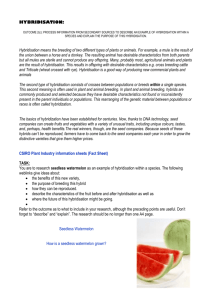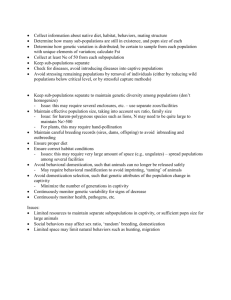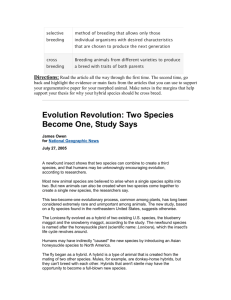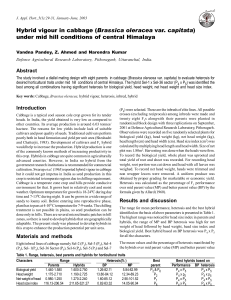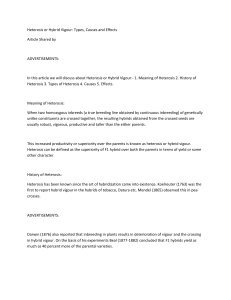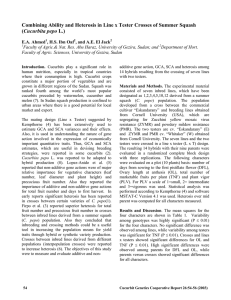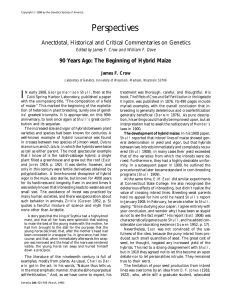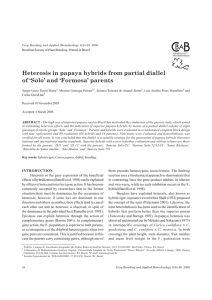Hybridization
advertisement
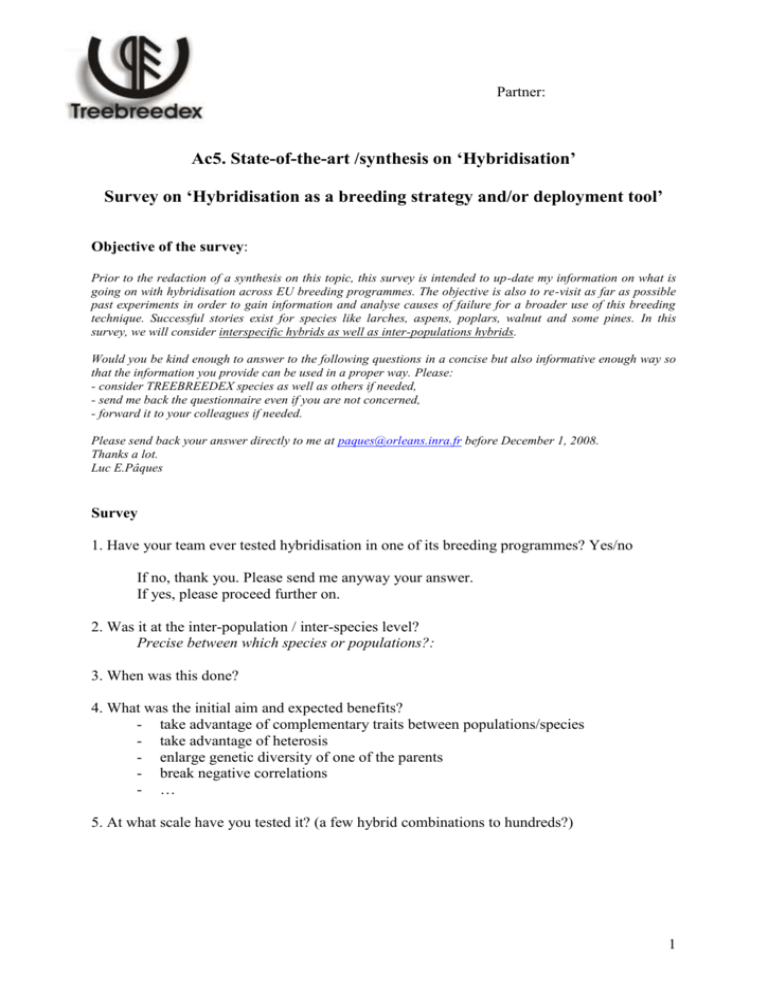
Partner: Ac5. State-of-the-art /synthesis on ‘Hybridisation’ Survey on ‘Hybridisation as a breeding strategy and/or deployment tool’ Objective of the survey: Prior to the redaction of a synthesis on this topic, this survey is intended to up-date my information on what is going on with hybridisation across EU breeding programmes. The objective is also to re-visit as far as possible past experiments in order to gain information and analyse causes of failure for a broader use of this breeding technique. Successful stories exist for species like larches, aspens, poplars, walnut and some pines. In this survey, we will consider interspecific hybrids as well as inter-populations hybrids. Would you be kind enough to answer to the following questions in a concise but also informative enough way so that the information you provide can be used in a proper way. Please: - consider TREEBREEDEX species as well as others if needed, - send me back the questionnaire even if you are not concerned, - forward it to your colleagues if needed. Please send back your answer directly to me at paques@orleans.inra.fr before December 1, 2008. Thanks a lot. Luc E.Pâques Survey 1. Have your team ever tested hybridisation in one of its breeding programmes? Yes/no If no, thank you. Please send me anyway your answer. If yes, please proceed further on. 2. Was it at the inter-population / inter-species level? Precise between which species or populations?: 3. When was this done? 4. What was the initial aim and expected benefits? - take advantage of complementary traits between populations/species - take advantage of heterosis - enlarge genetic diversity of one of the parents - break negative correlations - … 5. At what scale have you tested it? (a few hybrid combinations to hundreds?) 1 6. Is inter-specific/populations still used now in your breeding programme? Yes/no If no, why? - crossing problems (what kind of problems have you met?) - not expected results in terms of benefits? - Difficulties for mass-propagation/deployment? - Other - Would you be interested to revisit this breeding possibility? Yes/no If yes, for which particular issue? If yes, 7. What kind of hybrid varieties are you (have you been) developing? (hybrid populations, single hybrid families, hybrid clones, ) 8. How are your hybrids mass-propagated/deployed? - technique used (vegetative propagation, sexual propagation?), (SO: nber-size, clones, etc) - are they commercially produced? (level of production compared to pure species/populations) - do you have any technique for hybrid purity control? (Which one?) and have you set up any purity threshold over which the variety cannot be deployed? 9. Which benefits have you really obtained? (in terms of superiority over parents, etc) 10. Have you got access in your programme to determination of true heterosis (hybrid vigour)? If Yes, 11. Importance of heterosis - what kind of mating designs have you used? - what did you learn about heterosis? - Size (range) for which traits? - What was the improvement status of parental material before hybridisation? Was it wild material or already improved at some level? - Expression level over sites? Any trends? - Expression level over age? Any trends? 12. Genetic basis/prediction - Have you found any good predictors for heterotic combinations? o Link between GCA and GHA? o Link between some genetic distance and heterosis? - What did you learn about genetic control of traits within hybrids? (relative importance of GCA-parents1/parents2, GCA/SCA, importance of epistasis? - Do you have any information on 2nd generation, 3rd generation hybrids? - 2 13. Which breeding strategies have you implemented or are you intending to implement with hybridisation? - no strategy: pick the best combination in some crosses, - simple recurrent selection within species/populations first followed by inter-crossing after one-two generations? - some types of reciprocal recurrent selection? - composite breeding? 14. What did you learn about crossing ability among populations/ species? 15. Any published results (provide list of papers). 16. Additional information/ comments: Thanks. 3
